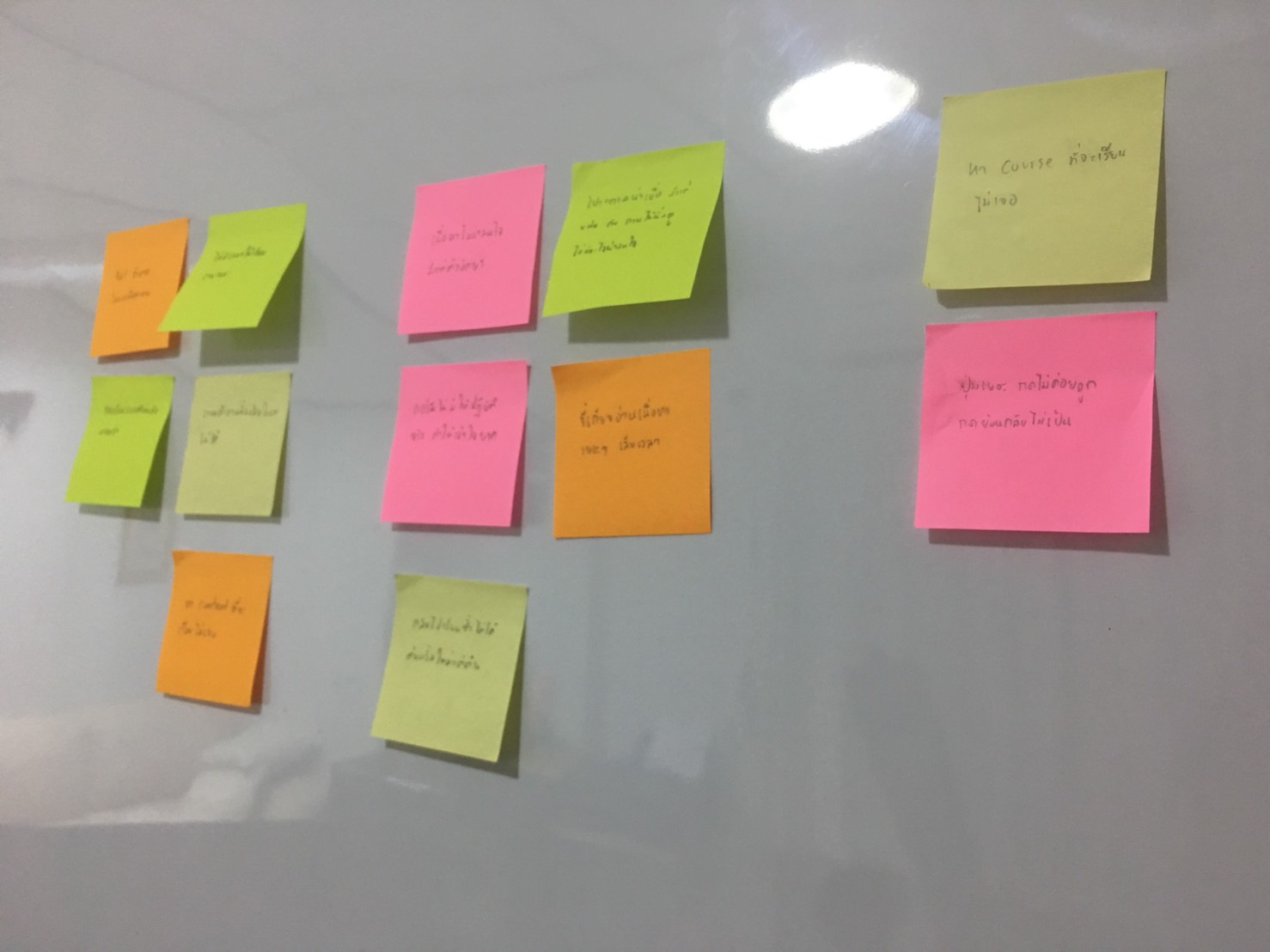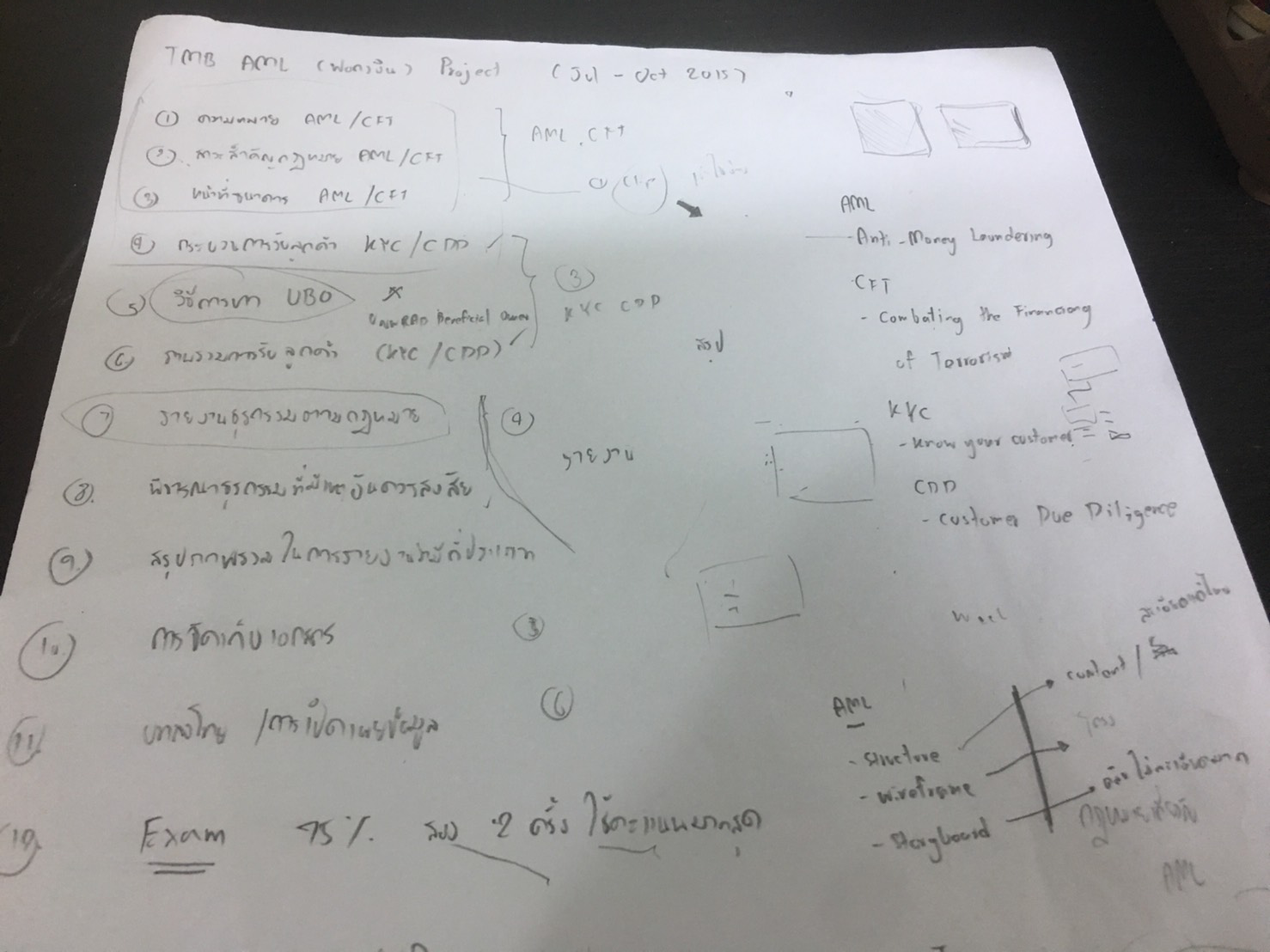We created an interactive course for an upcoming employee which taught about money laundering and its process.
By providing a story-based learning and real-world examples, chances that users be able to identify illegal activities during their job are increased by 5%
At the beginning of the project, we ran a stakeholders interview to find out their problems, goals or objectives which could be analyzed and define a scope for this program.
We interviewed 7 - 8 users with open-end questions about learning tools in a company to understand about their learning experience, program expectation plus their struggles within the system. Our core focus was to identify their pain points in learning.

We also ran a contextual observation with their Subject Matter Expert (SME) to understand their environment and how they apply money laundering process with the customer they met.






Hence we got some of the insights that we could summarize...
We brainstormed our ideas based on insights we got by sketching out ideas and mapping.




Many research we found stated that using story-based learning from the real situation was a better way for a process training because learners could participate in real scenarios and learned from their own mistakes.
To finalize our direction, we selected three design principles that are the most important to archieve our goals

Chunk Information
Group related information in a small section to reduce cognitive overload

Encourage learning
Use different learning content such as audios, pictures or interaction to motivate users to learn

Key takeaways
Summarize information for learners in each section to recall the content they learned
By focusing on our design principle, we generated this course story which related to the learners topic. Our general idea is to encourage learners to explore pieces of the knowledge from different interactive elements such as videos, audios, activities and then took the challenge in order to get a clue and proceed to the next chapter.


We started by sketching low-fidelity prototypes from our idea to test with learners. Our team focused on improving user learnability and what is the best way to demonstrate those processes easily. After we got a good conclusion, we then transitioned our sketches into a high-fidelity one, along with user evaluation.
























Although the timeline was tight and we couldn’t build all of the functionality that we wanted, we still managed to deliver good learning contents with valuable feedbacks from learners to help shape our course.
After the program launched, we got good feedbacks from stakeholders that employees enjoyed our course more than other courses furthermore, 5% more learners were able to remember some suspicious activities and correctly prevented them.